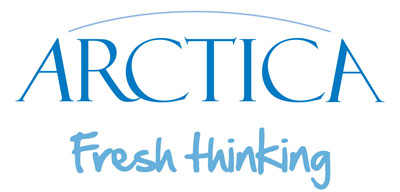Across the UK food industry, efficiency has become more than a buzzword, it’s a survival strategy. From energy costs to staffing challenges, manufacturers face constant pressure to produce more with less. That’s why so many are turning to lean manufacturing principles to transform their operations, streamline processes, and reduce waste.
At Arctica, we see lean thinking not as a quick fix but as a design philosophy, one that influences how we plan, build, and upgrade food factories. It’s about creating spaces that flow logically, eliminate unnecessary motion, and enable consistent, repeatable quality.
Rethinking “Lean” for the Food Industry
Lean manufacturing was born in the automotive sector, but its core ideas apply beautifully to food production, with one key difference: hygiene and safety sit at the heart of every decision.
In simple terms, lean means identifying and eliminating waste in all its forms, not just physical waste, but wasted motion, time, space, and energy. In a food factory, that might mean minimising unnecessary product transfers, streamlining cleaning cycles, or designing layouts that reduce operator travel distances.
But lean manufacturing isn’t a one-size-fits-all approach. Each product type, whether chilled ready meals, baked goods, or beverages, has unique process requirements, and efficiency has to be balanced with hygiene and traceability. That’s where design comes in.
Designing for Flow and Efficiency
The foundation of any lean facility is a logical, uninterrupted process flow. From goods-in to goods-out, every metre of movement counts.
In older facilities, production often evolved organically, with equipment added as demand grew. The result? Long, awkward product paths, cross-contamination risks, and cleaning inefficiencies. Through careful redesign, we can reimagine these spaces into efficient, linear flows where ingredients move smoothly from preparation to packaging without doubling back.
Even small design changes, such as repositioning storage or re-routing utilities, can unlock significant time savings and energy efficiency. In one Arctica project for a bakery client, redesigning the flow between the proofing and cooling areas reduced product handling time by nearly 20%. The same footprint, but a much smarter layout.
The Hidden Waste in Food Factories
When people think of waste, they picture scrap ingredients or rejected batches. But in food manufacturing, waste wears many disguises:
-
Idle staff waiting for a machine to reset.
-
Overproduction caused by unreliable scheduling.
-
Excess inventory that risks spoilage.
-
Heat escaping through poorly insulated walls.
-
A process line stopped because a valve or sensor failed.
Lean manufacturing encourages you to look beyond the obvious. Every delay, excess movement, or rework cycle is a cost, not just in money, but in energy, labour, and lost opportunity.
By embedding lean thinking into factory design, Arctica helps clients identify and remove these inefficiencies before construction begins. That’s the beauty of integrating lean at the design stage rather than trying to retrofit it later.
Empowering People Through Design
Lean isn’t just about machines and layouts, it’s about people. Operators, maintenance teams, and quality controllers all play a part in creating a culture of continuous improvement.
The most successful lean facilities empower their people by designing environments that make the right actions easy. That means ergonomic workstations, clear visual controls, and accessible maintenance points. It also means designing spaces that promote collaboration and problem-solving, not silos.
When operators can see what’s happening across a line, spot issues early, and act quickly, efficiency naturally follows. Arctica’s design process considers this human factor at every stage, because a truly lean factory works with its people, not against them.
Energy Efficiency as Part of Lean Thinking
Energy consumption is one of the biggest forms of waste in food manufacturing. From refrigeration to compressed air, utilities often account for more than half of a factory’s operating costs.
Lean principles extend here too: measure, analyse, and continuously improve. By integrating energy-efficient systems — such as variable-speed drives, heat recovery, and well-zoned HVAC — factories can dramatically cut costs and emissions.
At Arctica, we often run energy mapping exercises alongside process design to ensure every kilowatt is used effectively. The result is a cleaner, leaner, and more sustainable operation that supports both business performance and environmental goals.
A Culture of Continuous Improvement
Perhaps the most important aspect of lean manufacturing is that it’s never finished. Even the best-designed factories evolve over time as products, technology, and markets change.
That’s why we encourage clients to see lean design as the start of an ongoing journey, one where feedback from operators and data from equipment drive the next wave of improvement.
Modern facilities equipped with automation and smart sensors make this easier than ever. With real-time data on performance, downtime, and energy use, managers can identify bottlenecks quickly and adjust processes without guesswork.
A lean factory isn’t static; it’s always learning, adapting, and improving.
Frequently Asked Questions
Is lean manufacturing suitable for small food producers?
Yes. Even modest facilities can benefit from lean principles like simplified layouts, shorter product travel distances, and reduced changeover times.
Does lean design require automation?
Not necessarily. Automation can enhance lean processes, but the foundation lies in smart design and process discipline, not technology alone.
What’s the first step to applying lean manufacturing principles?
Start by mapping your current process flow and identifying delays, redundancies, and waste. Then evaluate which design or process changes will deliver the most impact.
How does Arctica apply lean design?
We integrate lean thinking from the concept stage — analysing layouts, workflows, and services to minimise waste and maximise value. Every metre of your factory is planned with purpose.
Conclusion
Lean manufacturing isn’t a buzzword — it’s a mindset that reshapes how food factories operate, evolve, and grow.
By focusing on waste reduction, smarter layouts, and energy-conscious systems, businesses can unlock higher productivity without expanding their footprint or increasing costs.
At Arctica, we combine lean design with engineering and sustainability expertise to help food manufacturers stay competitive in a changing world. Whether you’re modernising an existing plant or building a new one, our team can help you create a truly lean, future-ready factory.




